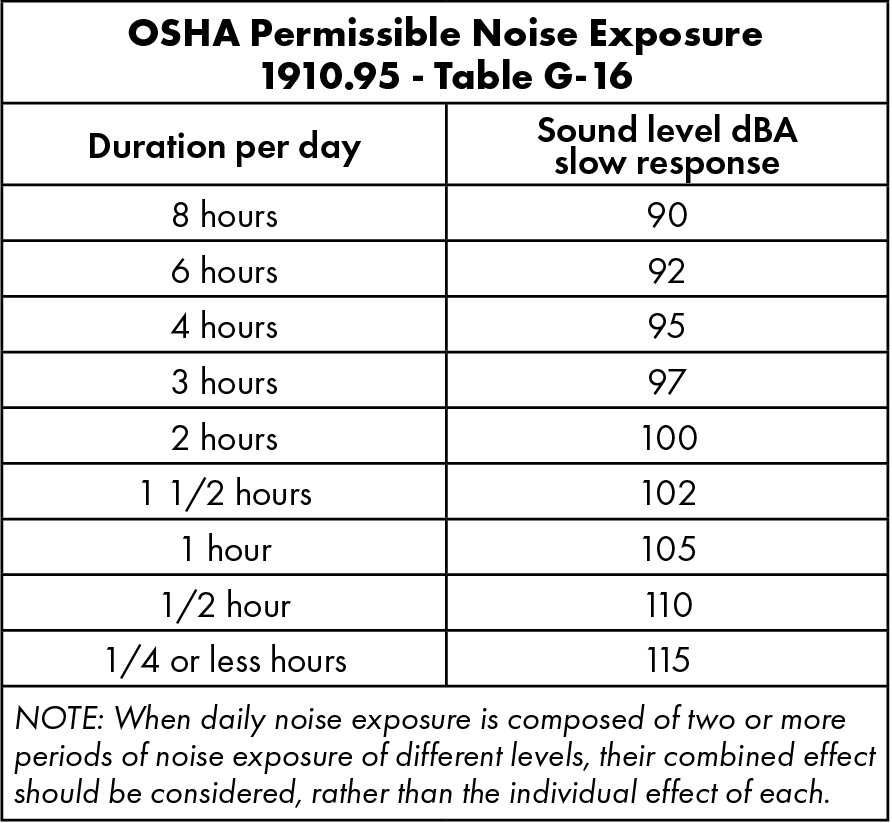EHS Topic of the Month: Noise Exposure

Sound is any pressure variation in the air or water that the human ear can detect. Sound is measured in decibels (dB), a unit of measurement based upon the pascal.
The lowest sound the human ear can hear (the threshold of hearing) is 20 micropascals. Each time we multiply this threshold of hearing in pascals by 10, we add 20 decibels to the decibel level.
- 0 decibels = threshold of hearing
- 15 decibels = birds chirping in the trees
- 70-85 decibels = car engine
- 140 decibels = threshold of pain
In the foundry, we can:
- Eliminate the noise at the source – Is there an alternative way to achieve the same outcome—for example, through different processes, using different machinery, or adapting existing machinery (including using different parts)?
- Enclose or entrap the noise – If the noise cannot be eliminated, can the machinery be enclosed to reduce the noise? Can it be placed in another area away from people?
- Minimize the noise – If it is not possible to eliminate or isolate the noise, how can it be minimized? For example, can people be moved around the plant to reduce their exposure? Are the correct types of hearing protection being worn?
 Noise control techniques include:
Noise control techniques include:
- Maintenance and repair
- Absorption
- Damping
- Enclosure
- Isolation
- Design techniques
